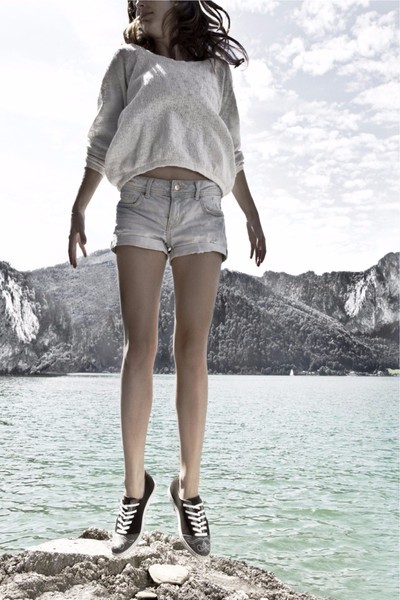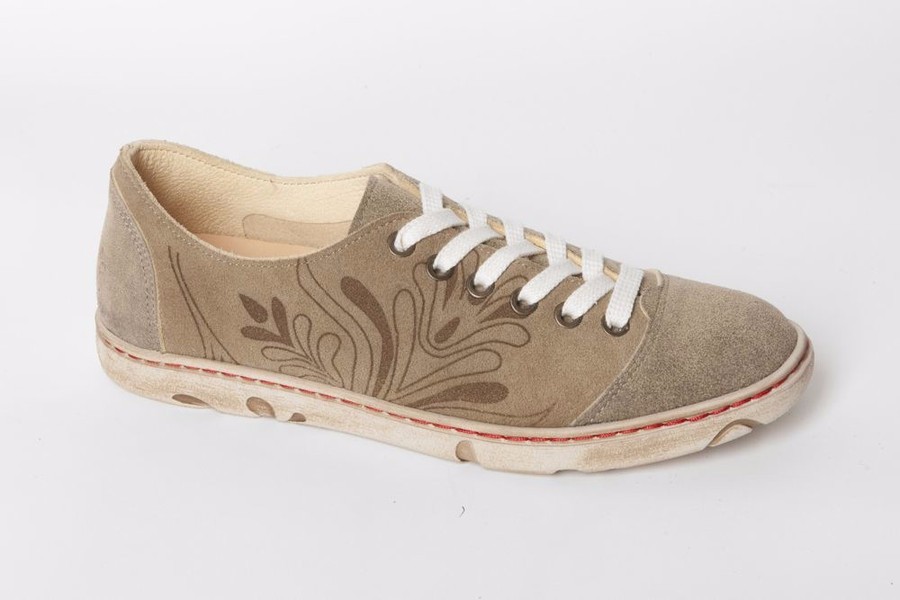When in October 2012 ESMOD Berlin released its first graduates from the MA Sustainability in Fashion course into the real world, DASH was lucky to be called onto the panel at Platoon Kunsthalle in Berlin to judge the students’ inspiring final works. Among the many visionary projects, I was particularly impressed by the holistic approach of Stefanie Stolitzka and the ‘perfect’ product she had managed to create within the short time of the course. I speak to the Austrian native, who next to the DASH Magazine Award also received a sponsored GREEN Showroom participation at next week’s Berlin Fashion Week(15-17th January 2013), about her ambitious aim of making shoe design a greener, more reflective industry.
Stefanie, you recently graduated from the MA ‘Sustainability in Fashion’ at ESMOD Berlin, a very recent addition to the ESMOD curriculum. What was your interest in deciding to take this MA and what did you study previously?
My main reason to start a sustainable Masters course in fashion was my passion for handcrafted, traditional and natural goods. After my BA in fashion design in Florence and my time at Adidas in Herzogenaurach, Germany, I decided to move to London. The British style and traditions had always been a great inspiration to me. However, living in London quickly made me realise that mass-consumption had become the main driver of today‘s fashion industry. People seemed to have forgotten what the real value of a fashion item was – an item should tell a story of the producer and wearer through unique design and craftsmanship. Every day people purchase clothes and accessories from high street shops without thinking: Where do these products come from? How were they produced? And where do they go after their use? Especially the question of where these clothes go after their use made me think. That’s when I decided that I wanted to change the way people purchase fashion products by offering them designs which in every step of their development, production and after-life protect our environment and people. Through Internet research I found the Sustainable Masters course in Berlin. After my first visit to the school, I was sure that Berlin as a pioneering city in eco fashion was the right place to study sustainable, social and environmentally friendly fashion.
The term ‘sustainable’ has become sort of a buzzword in recent years, also in connection with other concepts like ‘slow fashion’, yet its socio-political, economical and environmental implications are diverse. How did you define this term for yourself in your project and what aspects did you consider most strongly?
As said before, traditional craftsmanship has always been my great passion, especially the Austrian heritage. Therefore, as part of my Masters project, I created the concept of ‘Sustainable Tradition’, aiming to transmit traditional craftsmanship onto contemporary design objects using naturally, locally and socially fair production and working conditions to keep traditions and our nature alive for future generations. The project titled ‘Vios’ is part of this concept. Vios is a sustainable trainers collection inspired by Austrian tradition, focused on the traditional Lederhosen and craftsmanship. Important for the realisation of my project was local material sourcing. Here my further interest was the use of naturally tanned leather without any chemicals or heavy metals such as chrome or synthetic colourings. All in all, Vios is an approach to a holistically designed sustainable product including all that matters to produce a product in the way it should have been done from the beginning – in accordance with our planet and people.
You decided to design a sustainable shoe range for your MA implementing elements of Austrian heritage in materials and motifs. Why did you decide on shoes and what was the incentive behind the Austrian touch?
Handcrafted leather goods have always fascinated me; particularly shoemaking, being an important part of human heritage, is a wonderful craftsmanship. Unfortunately, today the conventional leather tanning industry using chrome III and heavy metal tanning agents has became one of the most polluting industries in the world. Hence my reason for choosing to design a sustainable trainers collection was my desire to create awareness in the fashion market. In addition to my in-depth research on leather, I realised that my love for heritage and traditional Austrian craftsmanship would be the perfect inspiration. The use of traditional and naturally processed deer leather used for Austrian Lederhosen allowed me to create a collection which combines a unique resource-protecting and socially fair product.
Next to the DASH Magazine Award, you also won a sponsored showroom presentation at GREEN Showroom during Berlin Fashion Week. How did you prepare for this and what are you hoping to take away from the experience?
First of all, I was more than honoured to have won this great opportunity to exhibit my Vios project at such an inspirational showroom concept for ecological fashion. Particularly Ms. Magdalena Schaffrin’s attitude towards green fashion has fascinated me from the beginning. Generally speaking, the preparations for the showroom were quite smooth having already exhibited my project in an installation at our final show in October. I had a good vision of the setup. However, as the space at Hotel Adlon is limited, I’m curious to build up the Vios installation on site this week. Further, considering Berlin Fashion Week’s worldwide recognition and the very exclusive and fashionable eco-fashion brands which are going to exhibit their collections next to mine makes me eager to meet new people from the sustainable fashion industry, especially now that I’ve started to work with Legero on a sustainable footwear project. I’m looking forward to creating a wide sustainable network with people that share my passion for natural materials and crafted goods.
One of the hardest things in footwear is to secure production. Many recent graduates struggle with this and ultimately often end up working for bigger brands rather than starting their own line. How are you handling this situation?
In this respect, I’m actually quite lucky. Coming from a footwear background, my decision to produce my trainers collection together with Austrian-based Legero and Think!Shoes was a great opportunity for me. The combination of Legero’s knowledge in shoemaking and mine in sustainable material sourcing and development allowed me to create a collection which was developed and produced entirely in Europe. Without the support of Legero I would have never been able to develop such a thought-through and ready-for-the-market collection. Shoemaking, as you mentioned, is a very complicated, time-consuming and expensive craft that, without any support, both economically and technically, would have never been possible. Legero and Think!Shoes’s openness was essential for the creation of Vios. And now, even though my Masters course is finished, Vios is still a project I want to follow up in the coming years. Yet, before launching it as a real brand, it’s important to me to receive an in-depth insight into the shoe-industry’s status quo to obtain the best understanding of the general market situation. Where are we now? What is possible? How can the market be improved in the long run? Only considering these questions makes it possible to build up an intelligent and effective path to produce shoes that walk the natural way.
Sustainability in production is generally thought to equal astronomical prices. How are you aiming to build your audience while maintaining your high production level and keeping retail prices at bay?
Vios, as a matter of fact, due to the special materials and traditional workmanship, is quite an expensive product. In any case, the creation of awareness and value in the industry and on the market is crucial for my project’s concept of ‘Sustainable Tradition’, aiming to make people revaluate their thinking and purchasing habits. People need to be reminded that establishing a relationship between a product and the consumer makes it unique and creates timeless value. Sustainable tradition should remind us of the beauty of crafted goods, products that are made with passion to protect our culture and environment. I believe that Vios, especially for the Austrian Tracht-inspired design, gives a certain value to the product. People should purchase my shoes not only for their look, but for their unique construction and special materials. Long-lasting design changes according to how the wearer treats and wears their product –these characteristics make each Vios shoe unique. The trainer, a design object which is worn by every gender, age and culture, already has an iconic status. I’m convinced that Vios has the ability to make conscious people start buying shoes for their quality and story, instead of buying cheap and soulless, mass-produced shoes. They are a mirror of the handcrafter’s soul.
What is next for footwear designer Stefanie Stolitzka? Are you already working on a new collection, planning new trade show participations?
In January I started to work for Legero in Austria as Sustainable Development Manager. Directly after my graduation I was off to Vietnam for two months to collect experience on conventional shoe production. For me, this was a great experience particularly for my understanding of the current conventional development, production and market situation. In my opinion, in order to change the shoe industry’s wasteful system, you first need to understand how the system works to be able to perform relevant and effective change. At the same time, I also continue working on the realisation of Vios as a brand. My wish is to improve Vios until perfection, a shoe that protects our planet and people in every step of its life cycle.
Interview: Harald Weiler










